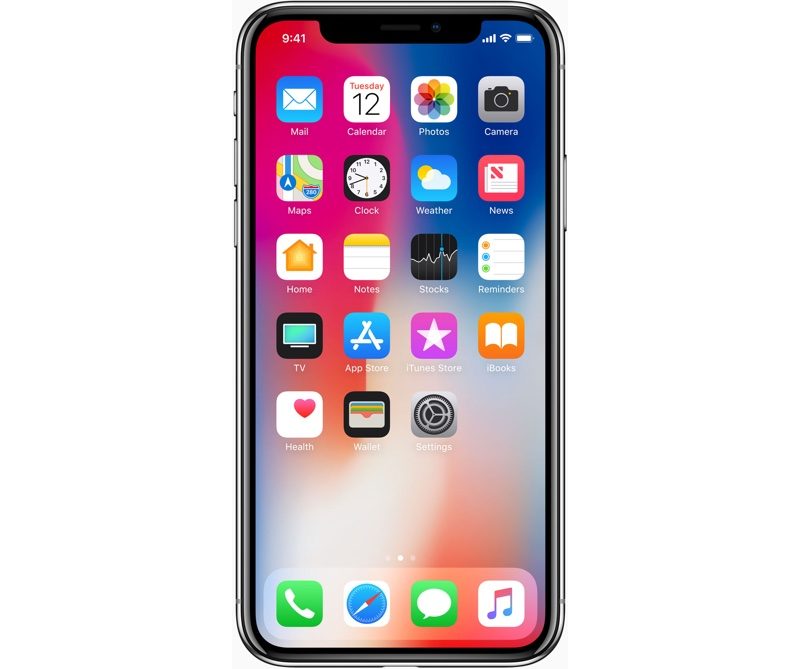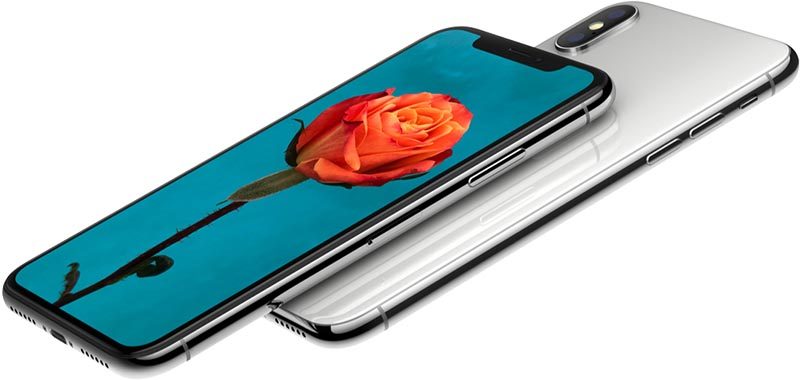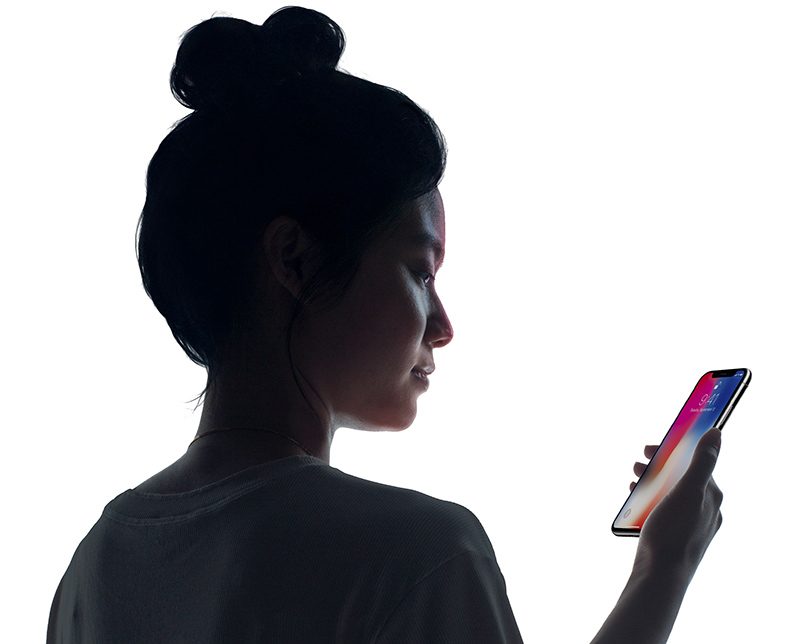IPhone X
iPhone X, pronounced “iPhone 10,” was introduced at Apple’s September 2017 event as a classic “One more thing…” addition to the iPhone 8 and 8 Plus product lineup. According to Apple, the iPhone X represents the biggest technological leap forward since the original iPhone was introduced 10 years ago, and it sets the path for the next decade of iPhone development.
Apple’s aim with the iPhone X was to create an iPhone that’s all display, blurring the line between physical object and experience. The 5.8-inch front screen melts into a highly polished curved-edge stainless steel band that encircles a durable all-glass body available in two pearlescent finishes: Space Gray and Silver. Both feature a black front panel.

The edge-to-edge top-to-bottom Super Retina displayadopts OLED technology for true-to-life colors, deep blacks, and a million-to-one contrast ratio. It features a 2436 x 1125 resolution and 458 pixels per inch, the highest resolution and pixel density ever introduced in an iPhone. It supports HDR, wide color, 3D Touch, and True Tone for adjusting the white balance of the display to match the ambient lighting.
At 5.8 inches diagonally, the iPhone X has the largest display introduced in an iPhone yet, but with no bezels aside from a notch housing the camera and sensors, it fits comfortably in the hand. At 143.6mm tall by 70.9mm wide by 7.7mm deep, it’s not much bigger than an iPhone 8, and it’s smaller than an iPhone 8 Plus.
The glass body of the device is IP67 water and dust resistant and it enables support for inductive wireless charging for the first time. The iPhone X adopts the Qi wireless standard and can charge through the glass back using any Qi-certified charging accessory. Apple is making an “AirPower” accessory to charge iPhone X, Apple Watch Series 3, and AirPods simultaneously, but it won’t be out until 2018.
With an edge-to-edge design, there is no room for a Home button, so the iPhone X adopts a new user experience. A swipe up at the bottom of the screen brings up the Home screen, while a swipe and a hold brings up App Switcher. There’s a Tap to Wake feature for looking at notifications, the side button can be pressed and held to activate Siri, and the Control Center is accessed by swiping downwards from the top status bar.

No Home button also means no Touch ID, so unlocking the device is done with a new Face ID facial recognition system. Face ID uses the TrueDepth front-facing camera system to create a 3D map of your face that’s used much like a fingerprint for unlocking the iPhone, authenticating Apple Pay purchases, making App Store purchases, and accessing passcode protected apps.
Face ID uses infrared camera technology so it works in the dark. It also uses machine learning and detects your face with hats, glasses, beards, and other objects that obscure your face. Because it uses a 3D map of the face, Face ID cannot be fooled by photos, masks, or other facial replicas. As an added layer of security, Face ID is “attention aware” and unlocks your iPhone only when you’re looking at it.
Face ID is powered by a state of the art dual-core neural engine built into the new A11 Bionic chip, data stored in the Secure Enclave and all processing done on-device. The A11 chip includes a total of six cores, with two performance cores and four high-efficiency cores, including the neural engine.

The performance cores are 25 percent faster than the A10, while the high-efficiency cores are 70 percent faster. An upgraded GPU is 30 percent faster, and there’s 3GB of RAM in the device.
With a second-generation Apple-designed performance controller, all six cores in the A11 chip can be accessed at the same time, resulting in much improved performance, especially when it comes to multi-threaded workloads. The A11 also features a faster GPU, an Apple-designed image signal processor and video encoder, an A11 motion coprocessor, and the Secure Enclave for Face ID.
With efficiency improvements enabled by the A11 Bionic chip, the iPhone X offers two hours more battery life than the iPhone 7, but the battery falls short of the battery in the iPhone 7 Plus.
The same 7-megapixel TrueDepth camera that powers Face ID enables a new feature called Animoji. Animoji are 3D emoji able to mimic your facial expressions. The TrueDepth camera tracks more than 50 facial muscle movements and translates that to the Animoji, which can be used in the Messages app.

Apple’s TrueDepth camera also introduces Portrait Mode for the front-facing camera and enables Portrait Lighting, a new feature for adjusting the lighting in a portrait image taken by the front or rear camera.
In the back, the iPhone X features a vertical 12-megapixel dual-lens camera arrangement with an f1.8 wide angle lens and an f/2.4 aperture telephoto lens. Both lenses support optical image stabilizationand have improvements like a new color filter, deeper pixels, better low light zoom, and improved video stabilization. Between the cameras, there’s a new quad-LED True Tone flash.
With the individually calibrated cameras, a new accelerometer and gyroscope, tuning for ARKit, and the powerful A11 chip, the iPhone X has been designed for a better augmented reality experience. Developers can take advantage of both the rear camera and the TrueDepth camera to create unique AR apps with unparalleled face tracking capabilities.
iPhone X is available with either 64 or 256GB of storage. The 64GB model is priced at $999, while the 256GB model is priced at $1,199. Apple began accepting pre-orders for the device on Friday, October 27 ahead of an official November 3 launch date.
